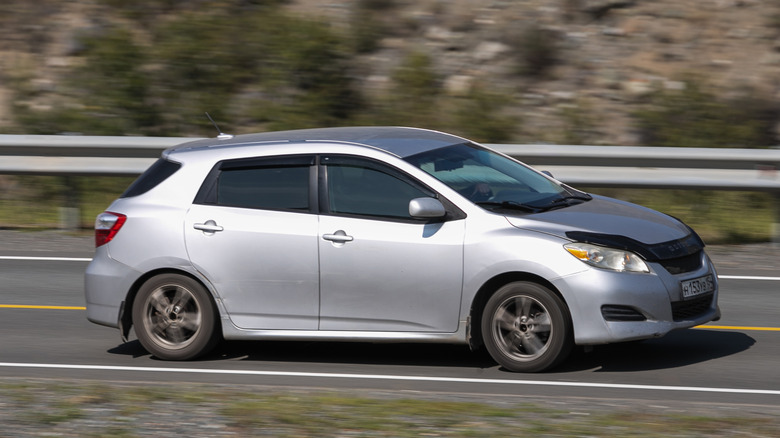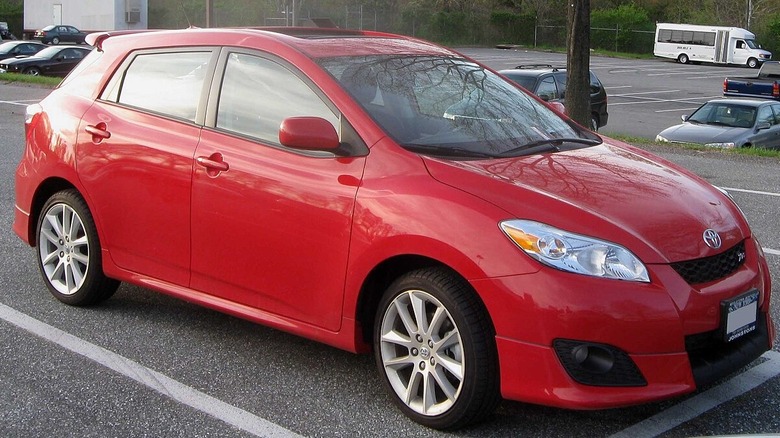Why Did Toyota Discontinue The Matrix?
The Toyota Matrix was discontinued just over 10 years ago and it's already been pretty much forgotten. While it was dropped in the U.S. ahead of 2014 (and a year later for Canada), the Matrix had dwindling sales much longer than that. In fact, it was its sales — or lack thereof — that led to the Matrix's end after being on the market since the 2004 model year. In 2015, Toyota spokesperson Maurice Durand told Cars.com that the Matrix only accounted for 0.2% of the brand's sales in its segment.
Durand added that Toyota had a "strong lineup" in 2014 that would reach a wide range of customers. He added that the Matrix wasn't as promising as the Corolla or offerings from Scion, which was shuttered in 2016. Later models of the Matrix only cost a little over $20,000, featuring either a 1.8-liter inline-four engine that produced 132 horsepower or a 2.4-liter four-banger that generated 158 horses. Reviewers described the Matrix's performance as underwhelming, noting that other hatchbacks available at the time were preferable.
The Matrix was too similar to the Pontiac Vibe
On top of just being unpopular and underwhelming, it was logical to discontinue the Matrix since it shared a platform with the Pontiac Vibe, which was discontinued with the close of the NUMMI plant in 2009. In fact, when the Matrix first came out, a lot of drivers got the two models confused. While the Vibe and Matrix were not the same car, they did have a lot in common when they both arrived in 2003 as the last vehicles Toyota and General Motors developed under their partnership.
The Matrix and Vibe were both small, four-door front-wheel drive wagons that used the same Toyota engine and transmission as that generation's Corolla. The two models also sported a generic station wagon design with a nondescript, round body. There were a few minor aesthetic differences between the exterior design of the Matrix and Vibe, but the interiors of both cars were almost identical.

